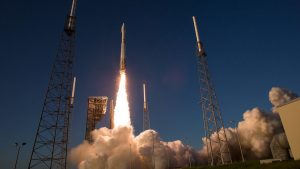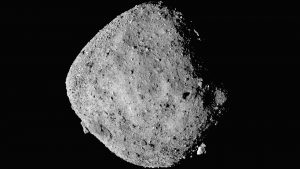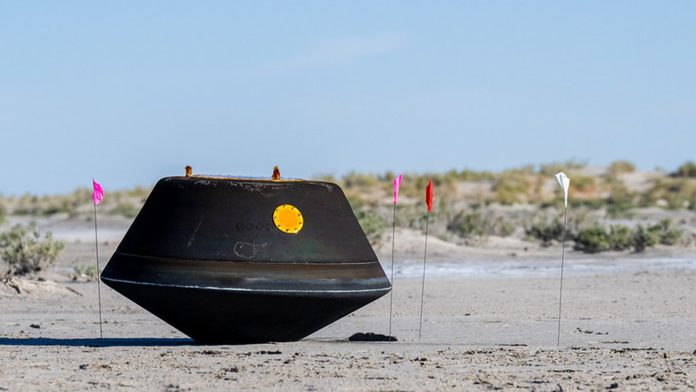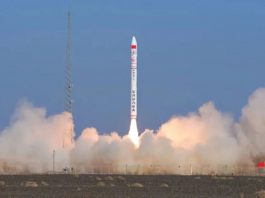The University of Manchester is set to receive and study a sample from asteroid Bennu, helping to unveil secrets of our Solar System.
The asteroid Bennu sample was collected as part of NASA’s OSIRIS-REx mission, which returned to Earth on 24 September.
It is NASA’s first mission to collect a sample from an asteroid.
The asteroid Bennu sample is the largest ever returned to Earth, estimated to hold around 250g of Bennu’s material – rocks and dust collected from the asteroid’s surface.
A cohort of more than 200 members from more than 35 globally distributed institutions will receive 25% of the sample once released by NASA’s Johnson Space Centre.
The importance of asteroid return missions
Over two years, the team will work to understand the asteroid’s history, components, and precursors.
The findings will help scientists learn more about the Solar System’s origin and organics that could have led to life on Earth.
The data collected from the asteroid Bennu sample also helps scientists’ understanding of asteroid impacts on Earth.

Dr Sarah Crowther, Research Fellow in the Department of Earth and Environmental Sciences at The University of Manchester, said: “It is a real honour to be selected to be part of the OSIRIS-REx Sample Analysis Team, working with some of the best scientists around the world. We’re excited to receive samples in the coming weeks and months, and to begin analysing them and see what secrets asteroid Bennu holds.
“A lot of our research focuses on meteorites, and we can learn a lot about the history of the Solar System from them. But meteorites get hot coming through Earth’s atmosphere and can sit on Earth for many years before they are found, so the local environment and weather can alter or even erase important information about their composition and history.
“Sample return missions like OSIRIS-REx are vitally important because the returned samples are pristine, we know exactly which asteroid they come from, and we can be certain that they are never exposed to the atmosphere so that important information is retained.”
About asteroid Bennu
Asteroid Bennu is rich in carbon. This means that it could contain the chemical building blocks of life.
It is accessible to space missions like NASA’s OSIRIS-REx because it crosses Earth’s orbital path.

It flies close to Earth, having a very small chance of hitting Earth next century.
Because of this possibility, studying the asteroid Bennu sample can help us learn how to be prepared to defend against an impact.
NASA’s OSIRIS-REx mission
The spacecraft launched on 8 September 2016, arriving at Bennu in December 2018.
After mapping the asteroid for almost two years, the team collected a sample from the surface of asteroid Bennu on 20 October 2020.
The sample landed on 24 September after OSIRIS-REx released its sample return capsule into the atmosphere as it flew by Earth.
The capsule descended by parachute, landing in the Utah western desert before being transported to NASA’s Johnson Space Centre. From here, the asteroid Bennu sample will be dispatched to scientists around the world.
The asteroid Bennu sample will offer generations of scientists a window into the early Solar System.
Now, the OSIRIS-REx spacecraft will set off on a new mission to explore asteroid Apophis. It will take six years to reach the asteroid.









